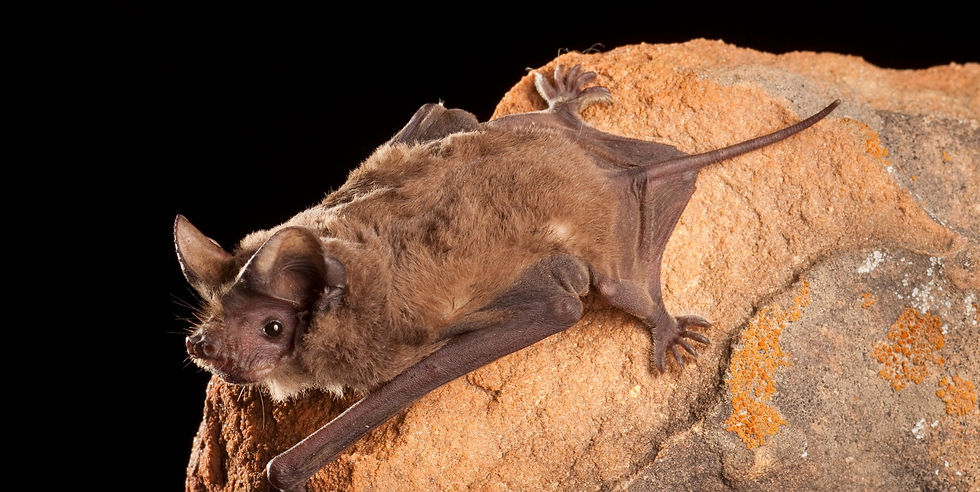Site of the Month | Snowberry Preserve
- Friends of Sausal Creek
- May 28
- 4 min read

Meet the stewards behind Snowberry Preserve, a quarter-acre site nestled at the corner of Skyline Boulevard and Castle Drive, in a residential neighborhood bordering Joaquin Miller Park and overlooking a busy boulevard. This City-owned parcel, long overlooked and overgrown with flammable and invasive vegetation, has faced numerous threats—from wildfire and potential development to routine maintenance practices that unintentionally harmed native habitat. At the same time, pollinators have been in decline due to habitat loss, pesticide use, and climate change. Concerned by these threats, a small group of neighbors came together in 2017 with a shared vision: to restore the area into a healthy natural space that supports pollinators and wildlife while also educating and inspiring the community.
Thanks to the steady efforts of Doug Mosher, Sylvia Sykora, and Carla Din, meaningful progress has been made—clearing fire-prone vegetation, planting native species from our nursery (with a nearly 100% survival rate!), and providing critical habitat.
FOSC: What is your connection to the Sausal Creek Watershed and the Snowberry Preserve site?
Sylvia: I got connected to FOSC through CNPS efforts to save a Pallid Manzanita colony threatened by the relocation of the Chabot Observatory in 1999. I love the idea of supporting hyper-local groups that care for and improve our shared environment—especially right here in my own neighborhood.
Doug: I’m an Oakland resident and vice-chair of the Oakland Firesafe Council. In 2017, after neighbors raised wildfire concerns around Snowberry Preserve, I applied to the City’s Adopt a Spot program. With a few neighbors, we began regular maintenance to clear flammable vegetation and enhance the beauty of the property.
Carla: I’ve been a proud Sausal Creek Watershed resident for most of my life. When the City designated Snowberry Preserve as an Adopt-a-Spot in 2017, we were thrilled that FOSC’s Nursery would be supporting our restoration efforts.
FOSC: Tell folks a bit more about this site.
Sylvia: In 1988, the site was part of an Oakland City Council effort to sell off the protected view sites on Skyline Boulevard for development. PPNA (Piedmont Pines Neighborhood Association) opposed those efforts, which brought the Snowberry lot to my attention. At the time, it featured a few mature Madrones, aging Monterey pines and cypress, and dense blackberry, along with a few mature oaks and two large Ribes sanguineum—now, sadly, gone. In 2016, three non-local redwood cultivars were planted as memorial trees, but the site remained largely untended, with invasives like Vinca major creeping in from neighboring properties and native vegetation surviving without attention.
Our interest in joining with FOSC to become stewards of the lot dates from late 2017. In early 2019 we invited neighbors to join our first workday.
Doug: For many years, vegetation management at the site was inconsistent. Some years it went uncleared, and the weeds and grasses dried out to become a fire hazard along Skyline Blvd—a primary evacuation route—and to neighboring homes. Other years it would be cleared down to the dirt, leaving a barren lot.
Carla: Snowberry Preserve was named 'Snowberry' (Symphoricarpos albus) because it is one of the earliest plants we introduced to the site; 'Preserve' was added as a play on words!
FOSC: What are some of the challenges at this site?
Carla: One of the biggest challenges is tackling the tenacious Ehrharta erecta (panic veldtgrass) that was inadvertently introduced by UC Berkeley researchers. Another is self-funding the project—while FOSC generously provides seedlings and plants for the site, for which we are grateful, there are other expenses that we personally cover, like material for plant and pollinator garden enclosures. Each time a tree must be removed, it puts our natives at risk of being damaged. Finally, with a site this large, it will take years before it becomes established!
Doug: A big challenge is trees that are aging, dying and falling within the lot and towards neighboring properties and structures. It has been difficult and time consuming having the City remove fallen trees, and cutting and removing those that are in danger of falling.
FOSC: What have been some successes or moments you’ve celebrated?
Carla: The most exciting moment for me was seeing an Anise Swallowtail caterpillar on the California Yampah (see photo)! We rejoice when our plants flourish—like Redwoods, Toyons, Oaks, California Fescue, Ribes, and Bee Plants—when butterflies such as the Anise Swallowtail, Variable Checkerspot, and Mylitta Crescent flutter through, and when new bird species like Acorn Woodpeckers start visiting.
Sylvia: The survival rate has been high, thanks mainly to sturdy wire mesh protection around the plants and regular summer watering during their first year. In spite of the lot's location at the intersection of several well-traveled streets, none of the plants appear to have been damaged other than by hungry deer.
Doug: A big success has been keeping the lot better cleared of fire-prone dried vegetation before the height of ‘wildfire season.’
FOSC: How can folks get involved at Snowberry Preserve? Do you have regular workdays?
Carla: This has been an incremental work in progress with the help of a handful of neighbors thus far. If we do a large planting this fall, we will put out a call!
FOSC: What advice would you give someone thinking about adopting a spot in their own neighborhood?
Carla: Go for it! There are so many opportunities to get your hands dirty and beautify your neighborhood, and the rewards are great!


